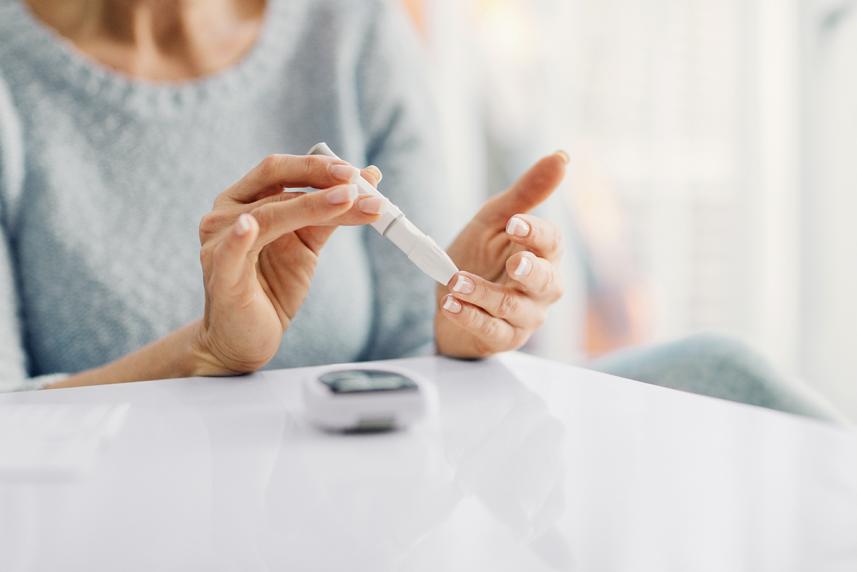
We have more than 90,000 doctors at over 2,000 locations. Our team will help you get the care you need, when and where you need it.

Keeping blood sugar steady gives you the energy you need in your everyday life. But when it spikes, your health can suffer. Here’s what to know.
Millions of Americans have prediabetes or diabetes. If you’re one of them, paying close attention to blood sugar levels is a must. But even if you’re not, it’s still smart to know the basics. Keeping your blood sugar levels in a normal range is essential for good health now and in the future.
“Blood sugar plays an important role in how you feel,” says Jennifer Donahue, MD. She's chief medical officer of ProHealth Physicians, part of Optum, in Farmington, Connecticut. “When your levels aren’t stable, you can feel tired and unwell. And if your blood sugar is constantly rising and crashing, you’re at risk of developing diabetes. This is a serious illness that impacts nearly every part of your body.”
Blood sugar is also called glucose. And it’s your body’s main energy source. You get it from the food you eat. This sugar mainly comes from foods that are high in carbohydrates, such as sweets, bread and potatoes.
When you eat these foods, sugar passes into your bloodstream. That’s where it meets insulin, a chemical released by your body. Insulin helps deliver sugar to your cells to use for fuel.
But eating too much sugar can make your blood sugar levels go haywire. Common culprits include foods and drinks with added sugar, such as cookies and soda. These foods cause a dramatic spike in your blood sugar levels followed by a crash. This leaves you tired, cranky and craving even more sugar.1
“For most people, eating a little sugar here and there is OK,” Dr. Donahue says. But eating a lot strains your body’s ability to process it. And that can raise your risk of diabetes. Eating a lot of sugar can also cause weight gain and obesity. Those can raise your risk even more.

We have more than 90,000 doctors at over 2,000 locations. Our team will help you get the care you need, when and where you need it.
A high-sugar diet or one high in saturated fat can lead to insulin resistance. This means your body stops responding properly to the effects of insulin. “Over time, the sugar you eat can’t make it into your cells to be used for energy. It stays in the bloodstream,” Dr. Donahue explains.
If your blood sugar is only slightly elevated, you have prediabetes. Unfortunately, more than 80% of people with prediabetes don’t know they have it. That’s according to the Centers for Disease Control and Prevention (CDC).2 Prediabetes can get missed because it doesn’t cause any clear symptoms.
Often, they don’t realize that anything is wrong until they have full-blown diabetes. Symptoms of diabetes include:
Having diabetes can take a major toll on many aspects of your health. It can damage your arteries and nerves. And everything from your heart to your eyes to your feet can be affected.3
Fortunately, sticking to healthy habits can cut your diabetes risk. This helps even if you have a family history of the disease. “Some people who are genetically prone to diabetes will get it even if they take good care of themselves,” says Dr. Donahue. “But following healthy habits can help delay the onset of diabetes.”
Here’s how you can help keep your blood sugar levels in a normal range:
Skip sugary, highly processed food. Dr. Donahue recommends following the Mediterranean diet. This eating plan is low in sugar and rich in fish, fruits and vegetables, whole grains and beans. Healthy fats are also included, such as nuts, olive oil and avocado oil. You can also add these disease-fighting foods to your shopping list.
Drop extra pounds. People who are overweight or obese are at increased risk of diabetes. The good news? You don’t have to reach your ideal weight to reduce your risk. “Losing just 10% of your body weight can lower blood sugar levels,” says Dr. Donahue. (Here's how to lose weight without counting calories.)
Eat more fiber. Fiber is found in foods such as whole grains and produce. It slows down how quickly you process sugar. That helps your levels stay steady.4 Fiber also helps keep you full so you’re less likely to overeat.
Exercise regularly. Aim for 150 minutes of moderate exercise each week.5 Five 30-minute walks will get you there. Regular exercise can help keep your blood sugar in your target range. That’s because it helps your body use insulin, says Dr. Donahue. “You also build muscle. This burns more energy, which helps you keep your weight stable.”
Get seven to nine hours of sleep per night. Lack of sleep affects hormones related to hunger and appetite. This can lead to overeating and weight gain, according to the Sleep Foundation.
Limit caffeine. “It’s OK to use some caffeine. But consuming a lot of it can make blood sugar levels unstable,” Dr. Donahue says. Caffeine may make your cells less sensitive to insulin, so they take in less sugar from your blood when you eat and drink.
Quit smoking. Lighting up can lead to diabetes because it makes cells less responsive to insulin. Smokers also have a higher risk of belly fat. That can raise the risk of diabetes even in people who aren’t overweight, says the CDC.6
Sources
© 2024 Optum, Inc. All rights reserved. Do not reproduce, transmit or modify any information or content on this website in any form or by any means without the express written permission of Optum.
The information featured in this site is general in nature. The site provides health information designed to complement your personal health management. It does not provide medical advice or health services and is not meant to replace professional advice or imply coverage of specific clinical services or products. The inclusion of links to other websites does not imply any endorsement of the material on such websites.
Stock photo. Posed by model.